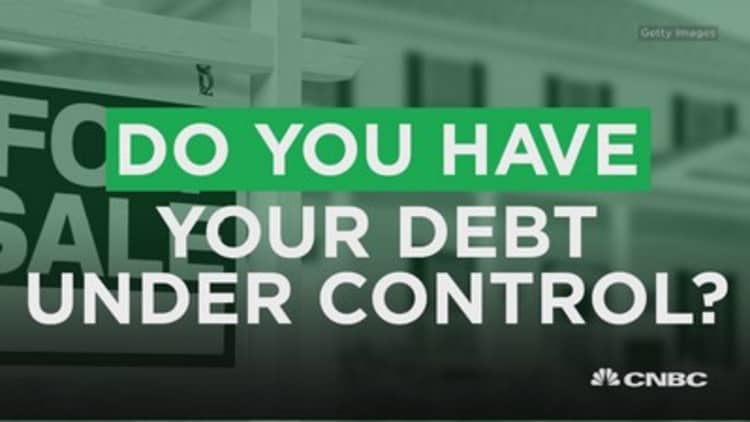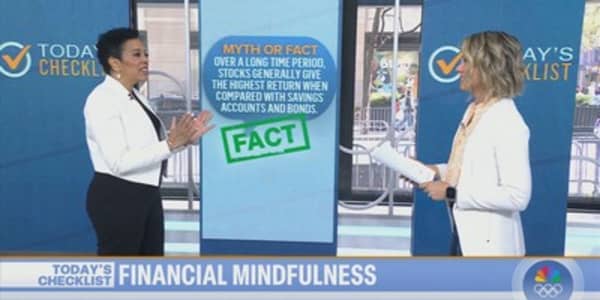
"People are embarrassed to talk about debt," says Harit Talwar, the head of Goldman Sachs' new consumer lending arm.
Still, "over a third of prime credit-worthy customers, with FICO scores over 660, have high interest credit-card debt," said Talwar, making them ideal customers for Goldman's Marcus, which offers personal loans of as much as $30,000 for up to six years.
Personal, or unsecured loans, are well suited for debt consolidation. They do not require borrowing against something of value, such as a house or car, which makes them particularly attractive for those without that kind of equity.
However, that generally means borrowers are charged higher interests rate than with a home equity loan, though they are still less than a credit card. (Financial experts often caution against using these loans because they build more debt. They also can't match zero percent balance transfer offers when it comes to consolidation.)
The average interest rate for a personal loan is 11.1 percent, while credit cards charge 16.4 percent, according to Bankrate. At Marcus (named after one of the bank's founders, Marcus Goldman), the average interest rate is around 12 percent, according to Talwar.
Personal loans also often act as a placeholder for those with a big upcoming expense but little in the way of savings. They are geared toward smaller loan amounts than a typical home equity loan, but more than one would want to run up on credit cards — "everything from $3,000 to $33,000," said Greg McBride, chief financial analyst for Bankrate.com.
The average loan balance on unsecured loans in 2016 was $7,640, up about 4 percent from the year earlier, according to the latest data available from TransUnion. Altogether, total personal loan balances grew $14 billion in 2016 to $102 billion – topping $100 billion for the first time ever.
"Our economy seems to be in good shape and wages are starting to pick up. Whenever that's the case, it's good to be in lending," said Jason Laky, a senior vice president at TransUnion.
"Right now the economy is growing so everyone is going to party like it's 1999," added McBride, "but when the economy slows, unsecured lenders are the first to rein in."
Before the Great Recession and the historic housing crash, homeowners used their homes to access as much cash as the bank would allow. But borrowers who were burned by falling housing prices, not to mention today's tighter lending standards, are considerably more wary now when it comes to home equity loans and lines of credit.
A number of online lenders, like SoFi, Lending Club and Prosper, have emerged in recent years to offer these types of loans as the alternative, particularly for millennials that may want to consolidate their debt but don't have the home equity for a secured loan to do it.
With the explosion of financial technology, "fintech lenders really reinvigorated this industry," Laky said. "I'm not surprised at all that folks like Goldman Sachs want to participate."
Just last year, Goldman Sachs introduced GS Bank, its own retail bank, to compete with online only banks like Ally Bank, Discover Bank and Capital One 360 (formerly ING).
"They've been expanding their business to reach more consumers, and this is just an extension of that," McBride said.
The number of people taking out unsecured loans jumped more than 15 percent to 15.82 million in 2016 from 13.72 million the year earlier and is now at the highest level since 2009, according to TransUnion.
But it's still a small lending category compared with mortgages, credit cards and auto loans, Laky said. "From the lender's perspective, there's still a tremendous amount of room for growth."
More from Your Money Your Future:
Where to stash emergency cash when the average savings account yields 0.11%
Busting millennial money myths: The truth about homes, cars and ownership
Carrying this kind of debt is a huge mistake







